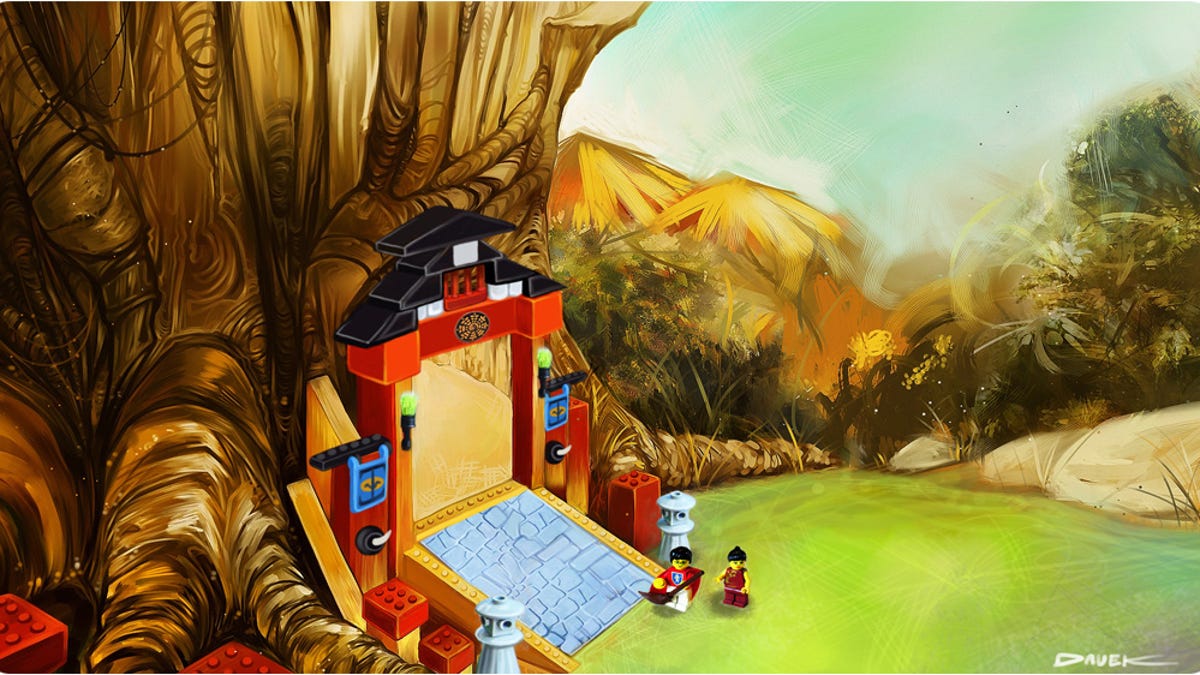'Lego Universe,' a brick MMO, is in development
Lego expects its online game, aimed at kids but with elements for adults, to be ready in a couple of years.

SAN FRANCISCO--On a regular basis, two of the things I most like to write about are Lego and virtual worlds. So when I first heard about Lego Universe, a Lego-themed virtual world, well, I was more than a little interested.
Lego Universe, which, sadly, is still about two years from public release, will be a full-scale MMO (massively multiplayer online game) aimed at Lego's core audience, kids ages 8 to 12. But in keeping with the company's awareness of the millions of adults who are utterly devoted to the iconic toys, there is expected to be something for the big kids, too, said Mark Hansen, Lego director of business development and a guiding force behind the game.
In fact, Lego Universe is being developed by a Denver company called NetDevil, and not long ago, Lego flew 50 "partners" to the Colorado capital for some in-depth discussions about what the game should entail.
Exactly what came out of those meetings, of course, is secret, but it's safe to say they were about creating the types of environments the adults would like to see the game include and which would be suitable for children.
A big part of the game is expected to be building--as in letting players build houses, vehicles, and so forth, all out of the famous plastic bricks. Well, at least digital versions of them.
During a meeting Wednesday at the Game Developers Conference here, Hansen explained to me that Lego Universe is very much a part of the, er, Lego universe. That is, the game will be just the latest part of the huge ecosystem. Practically, Hansen said, this means that players--or their parents--will be able to order actual, physical, sets of their creations.
And that means that Lego is in the process of developing a logistics team, Hansen said, that would be able to put such sets together, package them up and send them off to their eager recipients.
Lego Universe players will start out with a fully customizable "mini-figure," the little Lego people that are so well known from all our many years of play. From there, they'll explore the virtual world, building, interacting with other players and potentially engaging in the kind of make-believe that kids the world over have been doing with Lego bricks for many, many years.
That is to say, they can build a castle, and then get invaded by a friend. Or vice versa.
"As you go through the game," Hansen told me, "you gain accessories and you gain bricks...You earn points through play. As you do that, you get more property, more property to build on (and) you get to explore more."
As the game development process moves on, Lego will work hard to get parents involved because it is very aware that to build a game aimed at kids but which will put kids in the same environment as adults, safety must be a major concern.
But Hansen said that Lego also wants parents' input on how to make the game a good place to work on the kind of child development and learning processes that the physical toys are good at.
Whether I really see a game like this as a tool for child development is not clear to me. But I can understand their point. Still, I view it much more as a tool for getting kids to demand that their parents pull out their credit cards so they can buy the real-world versions of their in-world creations.

